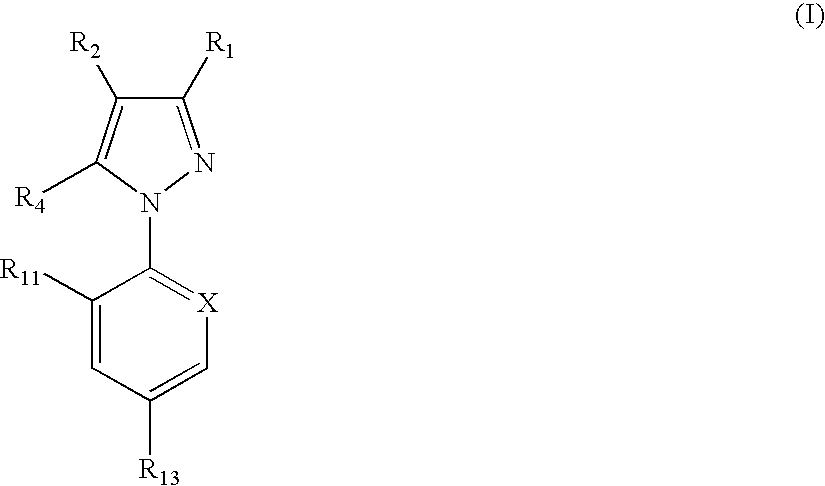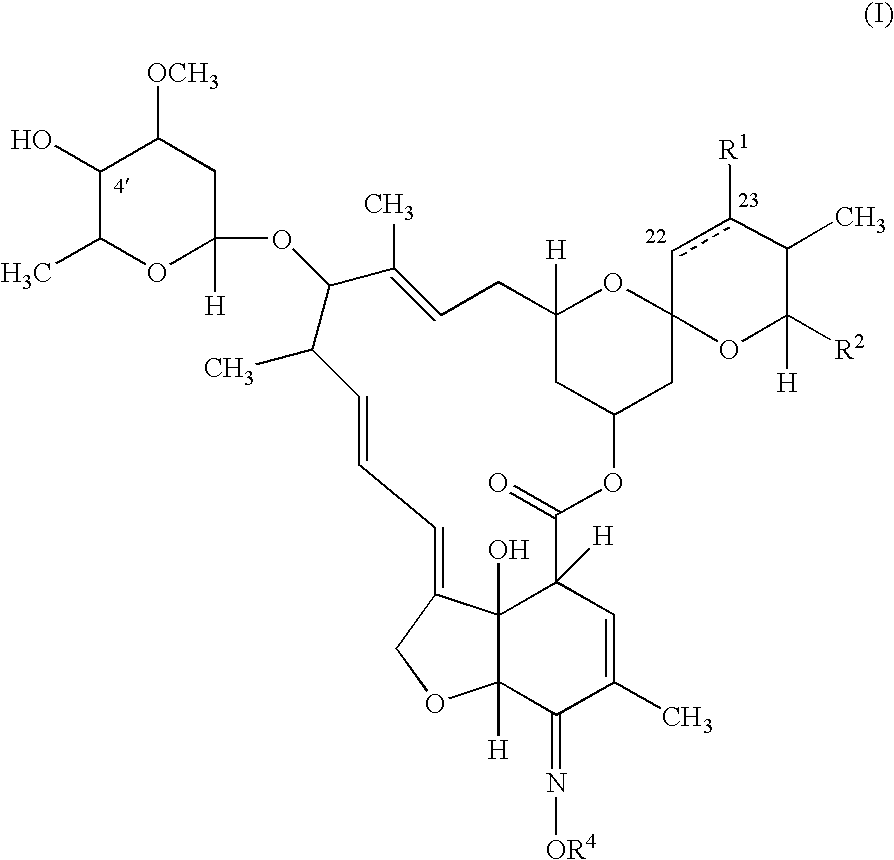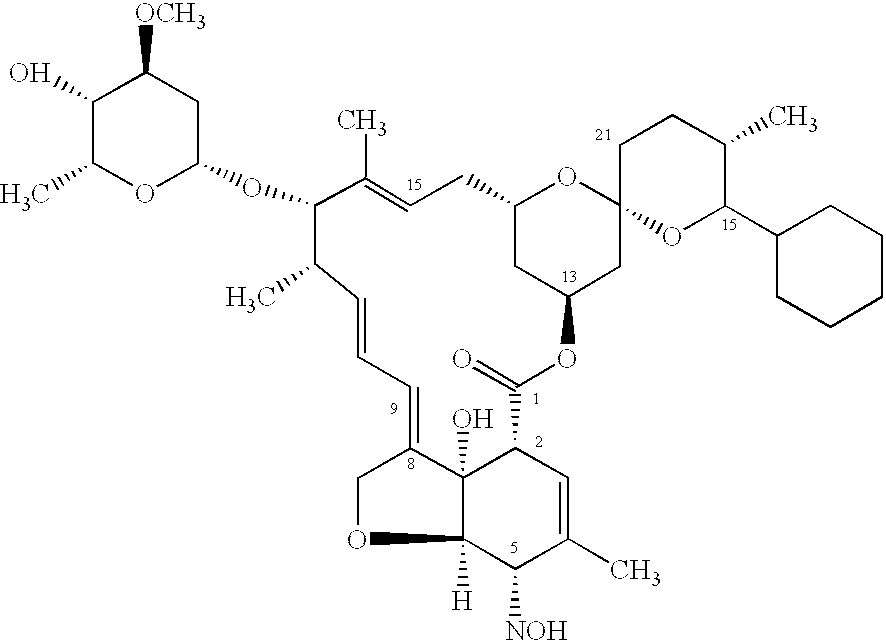Spot-on formulations for combating parasites
a formulation and parasite technology, applied in the field of spoton formulations for combating parasites, can solve the problems of affecting the health of animals, affecting the survival of animals, and causing a lot of psychological stress, so as to achieve the effect of less irritant or toxic formulations, effective and lasting destruction, and treatment or prophylaxis
- Summary
- Abstract
- Description
- Claims
- Application Information
AI Technical Summary
Benefits of technology
Problems solved by technology
Method used
Image
Examples
example 1
Preparation of a Concentrated Solution for Intermittent Application (Spot-On)
[0141]A concentrated solution for cutaneous application is prepared which contains, as weight by volume of solution, 10% of fipronil and 0.25% of ivermectin. The administration volume is 1 ml per 10 kg of animal weight. The composition is as follows, as weight / volume:
[0142]
fipronil:10%ivermectin0.25%Polyvinylpyrrolidone (Kollidon 17 PF):5%Polysorbate 80 (Tween 80):5%ethanol:10%Transcutol:q.s. for 100%
example 2
Preparation of a Concentrated Microemulsion for Intermittent Application (Spot-On)
[0143]The ingredients used are as follows:[0144]oily phase: C8-C10 caprylic / capric triglyceride (Estasan)[0145]aqueous phase: propylene glycol[0146]surfactant: diethylene glycol monoethyl ether (Transcutol)[0147]cosurfactant: ethanol or 2-propanol[0148]crystallization inhibitor pair: Polysorbate 80 (Tween 80) and polyvinylpyrrolidone (Kollidon 17 PF).
[0149]A composition example contains:
[0150]
fipronil:10givermectin:0.5gEstasan:8.5mlTranscutol:60mlethanol:15mlKollidon 17 PF:5gTween 80:5gpropylene glycol:q.s. for 100ml.
[0151]In the formulation described, the Transcutol acts as the surfactant (SA) and the ethanol or 2-propanol acts as cosurfactant (Co-SA). They make it possible to obtain, from a mixture of medium-chain triglycerides (Estasan) which is immiscible with propylene glycol, an isotropic transparent microemulsion. The crystallization inhibitor pair will be added once the microemulsion has been f...
example 3
[0152]Five dogs weighing 12 kg, deprived of food, receive the application of 1 ml of composition according to Example 2 or 3, i.e. 100 mg of fipronil and 2.5 mg of ivermectin, by localized cutaneous application between the two shoulders. The measurements carried out on the plasma of the animals show the production of an ivermectin peak of 1000 to 1500 to 2000 pg / ml.
[0153]A monthly or even bimonthly treatment of dogs makes possible complete control of fleas, ticks and dirofilariasis parasites.
PUM
| Property | Measurement | Unit |
|---|---|---|
| Volume | aaaaa | aaaaa |
| Volume | aaaaa | aaaaa |
| Volume | aaaaa | aaaaa |
Abstract
Description
Claims
Application Information
 Login to View More
Login to View More - R&D
- Intellectual Property
- Life Sciences
- Materials
- Tech Scout
- Unparalleled Data Quality
- Higher Quality Content
- 60% Fewer Hallucinations
Browse by: Latest US Patents, China's latest patents, Technical Efficacy Thesaurus, Application Domain, Technology Topic, Popular Technical Reports.
© 2025 PatSnap. All rights reserved.Legal|Privacy policy|Modern Slavery Act Transparency Statement|Sitemap|About US| Contact US: help@patsnap.com



